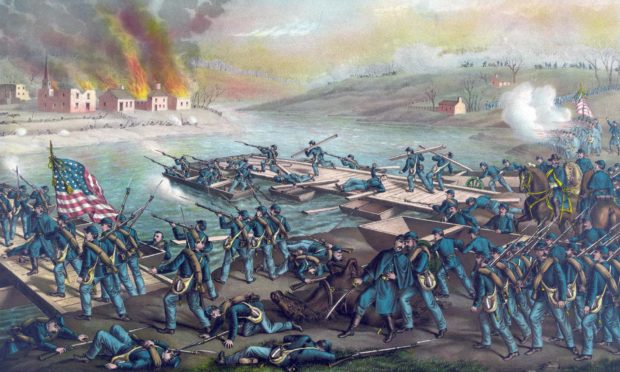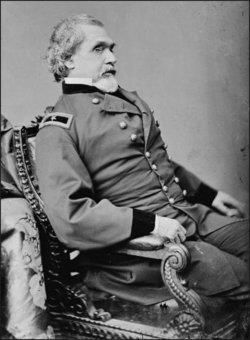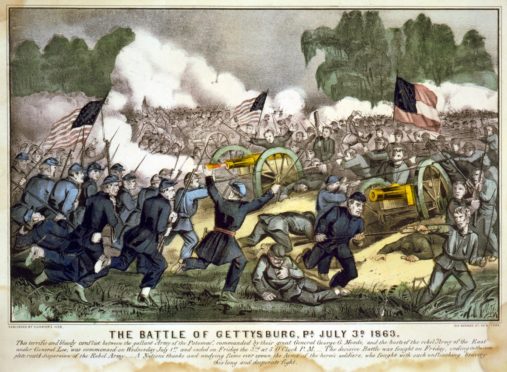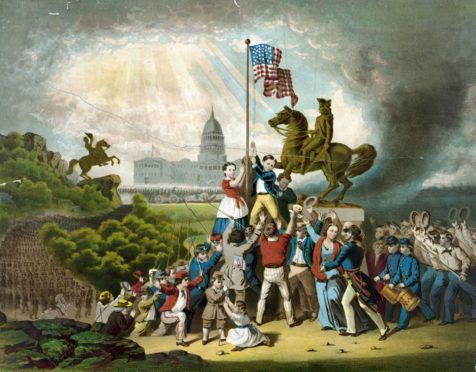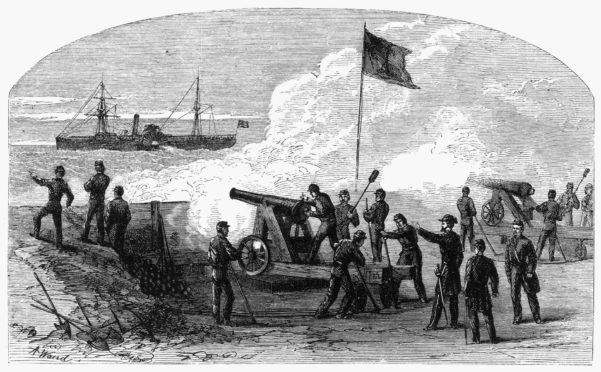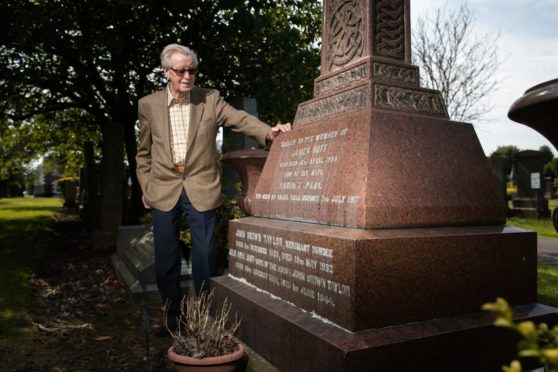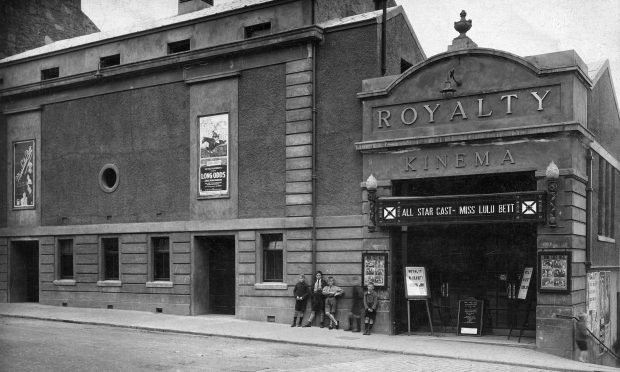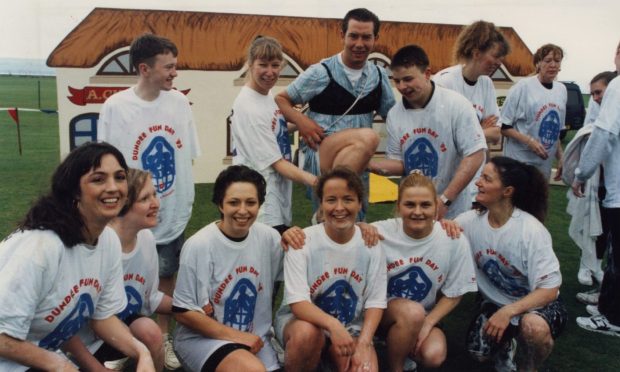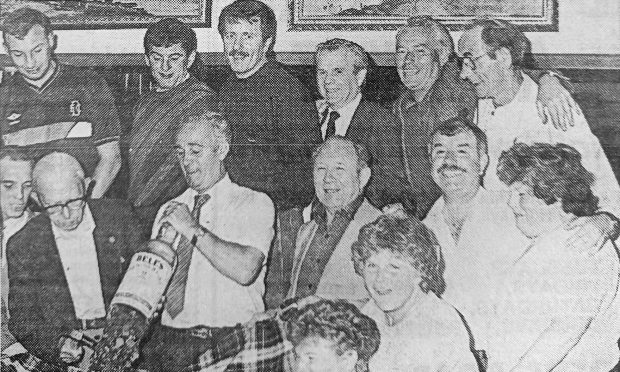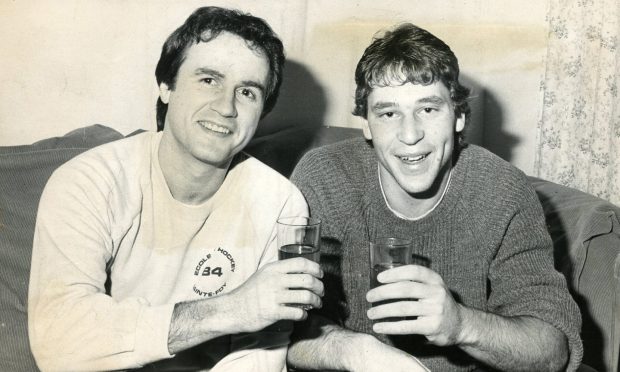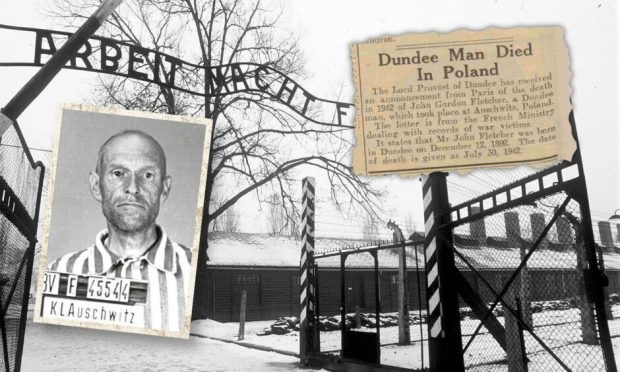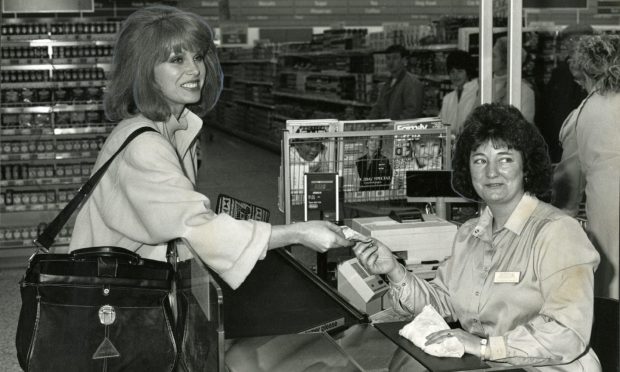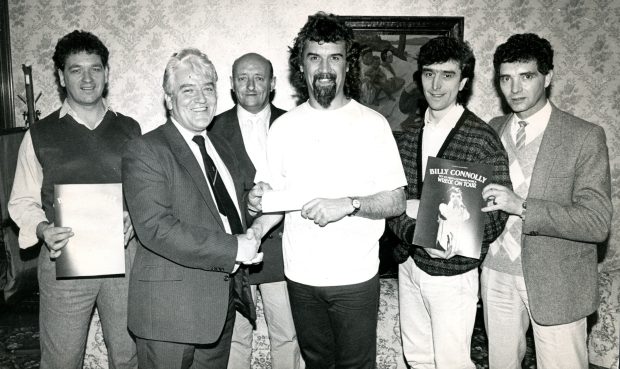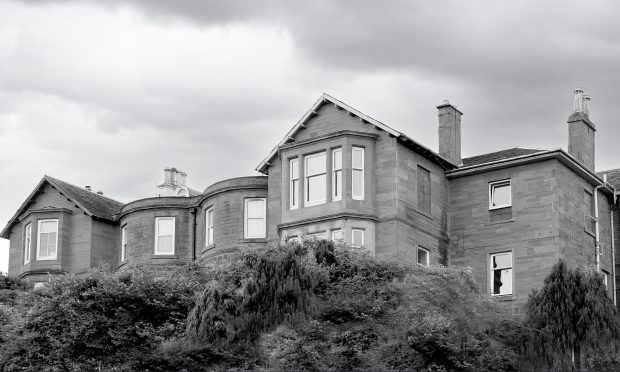A remarkable story of true love across the great divide of the American Civil War is hidden away in a quiet corner of a Dundee graveyard.
A little-known plot at Barnhill Cemetery has a little plaque pinned to the ground before it bearing a US Confederate flag.
Captain John Watson, archivist for The Fraternity of Masters and Seamen in Dundee, was driving past when his eye was drawn through the railings to the gravestone.
He went into the cemetery and found a memorial that celebrates the lives of James Duff, Harriet Duff, John Brown Taylor and Julie Ann Taylor.
Captain Watson said: “In simple terms it spans a period from when Harriet’s father was born in 1813 to the date that Harriet’s oldest daughter died in 1944.
“What transpired was a remarkable story of how two sides in conflict ended up together in marriage and how the American Civil War came to be remembered here in Dundee.
“It covers a period of American history that, ultimately, resulted in the United States as we know it today.
“It then reveals how a Scot, though not alone, was instrumental in the development of the State of Colorado after it gained its independence in 1876, and his involvement with the city of Denver in particular.”
Captain Watson tracked down Harriet Duff’s 1917 death certificate which revealed she was the daughter of Gabriel Paul and Mary Whistler Paul.
The couple were married in 1835 and would have three daughters and a son over the next several years including Harriet who was born in 1838.
Who was Gabriel Paul?
Gabriel Paul was a brigadier-general in the US Army.
He went to war in 1842 fighting the Seminole Indians in Florida.
He then served in the Mexican War taking part in the defence of Fort Brown, the battle of Monterey, siege of Vera Cruz, and several other battles including Cerro Gordo where he was wounded, but recovered to serve in the campaign to capture Mexico City.
He led an assault party that captured a Mexican flag during the storming of Chapultepec and was given an honorary promotion to the rank of major.
In 1852 he participated in a number of expeditions up the Rio Grande in which he captured Carvajal and his gang of desperadoes.
Paul began the Civil War as a major in the 8th Infantry Regiment, and in December 1861 was appointed colonel of the 4th New Mexico Volunteers at Fort Union in the New Mexico Territory.
He was transferred to a brigade in 2nd Division, fighting at the Battle of Gettysburg, where he was seriously wounded, during the defence of Oak Ridge.
During the action a bullet passed through his right temple, emerging out the left socket, carrying the left eye with it, permanently blinding him.
He never fully recovered and was discharged from active service and promoted to brigadier-general and placed in charge of a military asylum.
He retired after 51 years on December 20 1866 and his long years of suffering finally came to an end when he died in Washington aged 73 on May 5 1886.
He was buried with full military honours in Arlington National Cemetery with a monument erected over his grave by his comrades of the Grand Army.
The Dundee connection
Paul’s marriage to Mary Whistler broke up in the 1850s and he remarried Louise Rodgers in 1858 and the couple went on to have two daughters.
Harriet got married to James Duff in the same year her father wed for the second time.
Duff was born on May 17 1827 near Pitlochry and emigrated to the US between 1845 and 1848 in search of a better life.
Captain Watson said Duff enlisted as a private soldier in the US Army in 1848, where he rose to the rank of sergeant before resigning in 1854 at the age of 27.
By 1856 he had become a successful merchant in San Antonio and he was commissioned by the army to use his waggons to transport a large meteorite which was being taken to Austin where it was going on display in the Texan capital.
Duff’s business took him around many of the army frontier posts and Captain Watson said it was likely he knew the future Union army general and his family.
“Now at nearly twenty years of age, Harriet Paul would have been most attracted by the dashing, successful, unmarried, 30-year-old James Duff,” he said.
“So much so that they married in the same year her father wed for the second time, 1858.
“Duff’s business success continued and his waggons were involved with the relocation of the Texas Comanches to Indian Territory in 1859, the same year that his first daughter was born.
“When the first salvo was fired in April 1861 that marked the start of the brutal conflict that was the American Civil War, James Duff had already decided his destiny.
“He supported the Confederate cause simply because he believed in it.
“Immediately he became commander of an irregular Texas Confederate military unit, the 14th Texas Cavalry Battalion, that became known as ‘Duff’s Partisan Rangers’, and was active in seizing San Antonio, and its army garrison, for the state of Texas.”
‘Reign of unjustified terror’
Unionism in the Hill Country brought about his assignment to that area in May 1862.
He left his duty station at San Antonio, camped on the Pedernales a few miles west of Fredericksburg, and declared martial law in several precincts of Kerr and Gillespie counties.
He dismissed the Unionist enrolling officer, Jacob Kuechler, and began what many Hill Country people regarded as a reign of unjustified terror.
A group of German Texans, fleeing from the Hill Country to Mexico and onward to Union-controlled New Orleans, was confronted by a company of Confederate soldiers in a pursuit that culminated in the battle of the Nueces on August 10 1862.
Harassment of Unionists continued in the Fredericksburg area until Duff’s return to his base in San Antonio.
Duff’s command was later expanded into the Thirty-third Texas Cavalry and he served on the Texas coast throughout the remainder of the war.
After the war, Duff and his family fled to Mexico, then returned to Scotland where in 1871 he was living on Kingoldrum Farm in Forfarshire, with his wife Harriet and his two daughters, twelve-year-old Julie Ann, and six-year-old Margaret.
Prominent role in development of Denver
He returned to the US in 1877 and settled in Denver as the representative of the London-based, Colorado Mortgage & Investment Company (CM&I).
Duff and James Barclay were vice presidents and the American branch played a prominent role in the development of Denver.
The English company invested in banking, mining and cattle, and was heavily involved in the construction of irrigation systems in the state.
Duff and Barclay undertook the largest canal project ever completed in Colorado with the High Line which winds its way over 71 miles and four counties.
Around 1887 Duff moved to England and attended his daughter Julie Ann’s wedding to John Taylor, who was a linen manufacturer and merchant in Dundee.
He died in April 1900 and his widow Harriet returned to Scotland to live with Julie Ann and her husband at the four-storey Affleck Castle in Monikie.
Harriet died in 1917 at Hazel Hall East, Perth Road, Dundee, where she lived her last days being looked after by son-in-law John following his break-up from Julie Ann.
Captain Watson said: “James Duff’s background and beliefs persuaded him to support the Confederate cause.
“Gabriel Paul’s life was inextricably linked to the Union or Federal cause and we must suppose that his eldest daughter’s sympathies lay according to her father’s interests.
“We may never know whether Harriet ever saw her father again after 1858, perhaps the gulf between the Pauls and the Duffs later political beliefs was too great.
“In so far as Robert Duff and Harriet Paul were concerned in 1858, three years before such beliefs had to be tested, love conquered all and their marriage stood the test of time and that is the fundamental message that has been handed down.”
